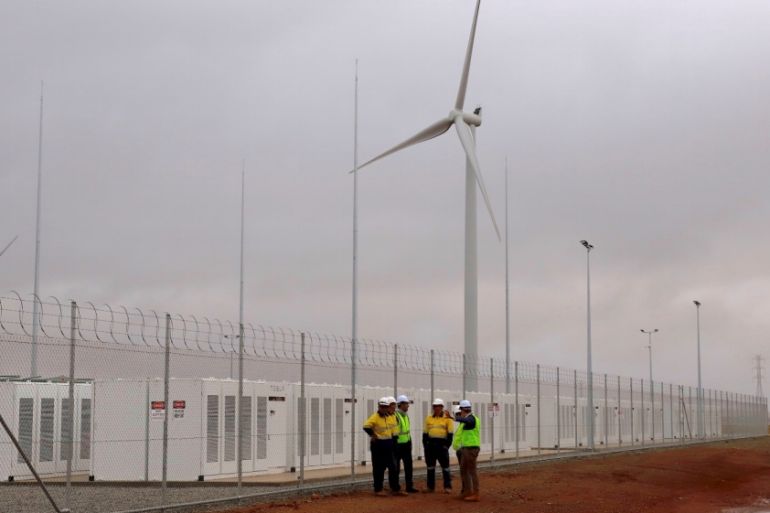Batteries: A powerful way to tackle climate change?
The World Economic Forum says improved battery technology could transform transport and energy production.

Countries have been falling behind in meeting the emissions standards they agreed to under the 2015 Paris climate agreement, but the solution could be just a (rather large) battery cell away, according to the World Economic Forum (WEF).
Renewable energy can be intermittent: solar panels do not produce electricity when it is dark, and wind turbines cannot do their job when the air is still. But batteries can store excess power when it is very sunny or windy, and pump the extra energy back into electricity grids when it is not.
Keep reading
list of 4 itemsChina’s economy beats expectations, growing 5.3 percent in first quarter
Inside the pressures facing Quebec’s billion-dollar maple syrup industry
Manipur’s BJP CM inflamed conflict: Assam Rifles report on India violence
Improved battery technology could reshape industries that contribute the most to carbon emissions, especially transport and energy production, argues a report released this month by the WEF.
Under the Paris deal, countries agreed to not let the world’s average temperature rise by more than 2 degrees Celsius (3.6 degrees Fahrenheit) above pre-industrial levels this century, and to try to keep the increase to below 1.5C (2.7F).
The WEF’s report, which coincides with a renewed focus on climate change at the United Nations General Assembly in New York, highlights the key economic and environmental benefits of boosting battery production and use by 2030.
A major benefit is flexibility.
The size of batteries used to store energy produced by renewables can be easily scaled up or down depending on the size of the area that needs to be powered.
They are also often more flexible than other options, including the use of hydroelectric power, the WEF said. Such systems pump a large volume of water uphill when there is excess energy around, and then release it back to turn turbines and generate electricity when it is needed.
They also respond quickly to changing electricity demands.
“They have a very low response time, making them suitable for grid stabilization measures. They also allow the power system to be decentralised, with consumers becoming energy producers via (for example) rooftop solar systems,” the report said.
From 2015 to 2018, the demand for energy storage batteries grew by more than 60 percent a year, the report noted.
But the WEF also cautions that there are risks to ramping up battery production, which itself can generate significant amounts of greenhouse gases, and will require the mining of more minerals such as lithium, nickel and cobalt.
To mitigate negative impacts, the WEF advocates for a “circular value chain” in which waste materials are reused to create new products.
Social justice is also part of the equation. Cobalt mines in places such as the Democratic Republic of the Congo have been called out by human rights groups for hazardous working conditions, including the use of child labour and other abuses.
The future is now
In some cases, such as the production of fully electric vehicles, the additional greenhouse gasses emitted are more than offset by a lower overall CO2 footprint throughout the car’s lifecycle, the WEF said.
Beyond the WEF study, large scale battery grids have already helped stabilise the supply of energy for thousands of people and saved at least one government millions of dollars.
Tesla Inc’s implementation in 2017 of the world’s largest lithium-ion battery in Hornsdale, South Australia has already resulted in multiple benefits to a region that was previously plagued by frequent power outages.
Following its success in South Australia, Tesla won a bid to deploy its batteries at Moss Landing in California, where US utility company Pacific Gas and Electric plans to install cost-effective energy storage solutions.
Tesla also unveiled the Megapack in July, a battery product made specifically for large utility-scale projects which the company says will require 40 percent less space, can be installed 10 times faster than current systems and uses one-tenth of the number of parts.